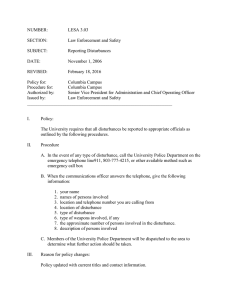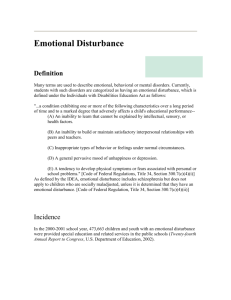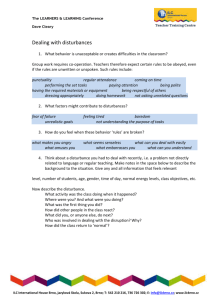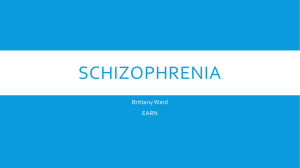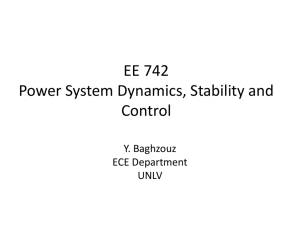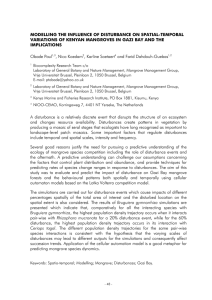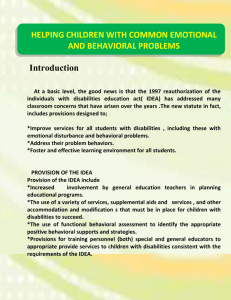Emotional Disturbance
advertisement
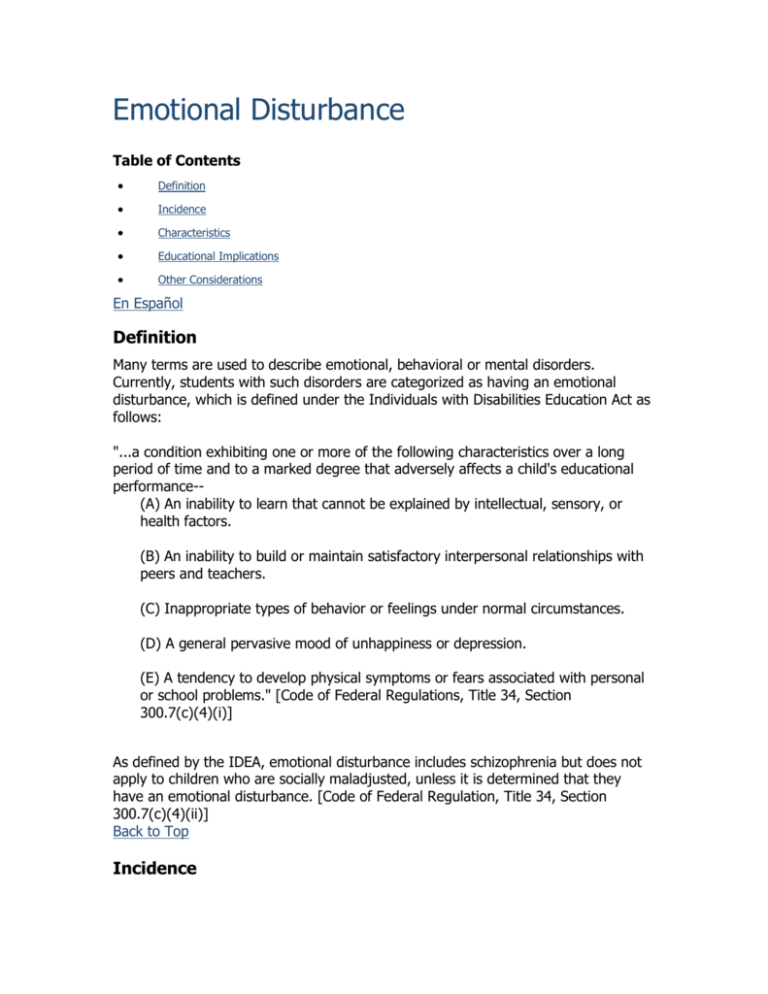
Emotional Disturbance Table of Contents Definition Incidence Characteristics Educational Implications Other Considerations En Español Definition Many terms are used to describe emotional, behavioral or mental disorders. Currently, students with such disorders are categorized as having an emotional disturbance, which is defined under the Individuals with Disabilities Education Act as follows: "...a condition exhibiting one or more of the following characteristics over a long period of time and to a marked degree that adversely affects a child's educational performance-(A) An inability to learn that cannot be explained by intellectual, sensory, or health factors. (B) An inability to build or maintain satisfactory interpersonal relationships with peers and teachers. (C) Inappropriate types of behavior or feelings under normal circumstances. (D) A general pervasive mood of unhappiness or depression. (E) A tendency to develop physical symptoms or fears associated with personal or school problems." [Code of Federal Regulations, Title 34, Section 300.7(c)(4)(i)] As defined by the IDEA, emotional disturbance includes schizophrenia but does not apply to children who are socially maladjusted, unless it is determined that they have an emotional disturbance. [Code of Federal Regulation, Title 34, Section 300.7(c)(4)(ii)] Back to Top Incidence In the 2000-2001 school year, 473,663 children and youth with an emotional disturbance were provided special education and related services in the public schools (Twenty-fourth Annual Report to Congress, U.S. Department of Education, 2002). Back to Top Characteristics The causes of emotional disturbance have not been adequately determined. Although various factors such as heredity, brain disorder, diet, stress, and family functioning have been suggested as possible causes, research has not shown any of these factors to be the direct cause of behavior or emotional problems. Some of the characteristics and behaviors seen in children who have emotional disturbances include: Hyperactivity (short attention span, impulsiveness); Aggression/self-injurious behavior (acting out, fighting); Withdrawal (failure to initiate interaction with others; retreat from exchanges of social interaction, excessive fear or anxiety); Immaturity (inappropriate crying, temper tantrums, poor coping skills); and Learning difficulties (academically performing below grade level). Children with the most serious emotional disturbances may exhibit distorted thinking, excessive anxiety, bizarre motor acts, and abnormal mood swings. Some are identified as children who have a severe psychosis or schizophrenia. Many children who do not have emotional disturbances may display some of these same behaviors at various times during their development. However, when children have an emotional disturbance, these behaviors continue over long periods of time. Their behavior thus signals that they are not coping with their environment or peers. Back to Top Educational Implications The educational programs for children with an emotional disturbance need to include attention to providing emotional and behavioral support as well as helping them to master academics, develop social skills, and increase self-awareness, self-control, and self-esteem. A large body of research exists regarding methods of providing students with positive behavioral support (PBS) in the school environment, so that problem behaviors are minimized and positive, appropriate behaviors are fostered. (See the resource list at the end of this publication for more information on PBS.) It is also important to know that, within the school setting: For a child whose behavior impedes learning (including the learning of others), the team developing the child’s Individualized Education Program (IEP) needs to consider, if appropriate, strategies to address that behavior, including positive behavioral interventions, strategies, and supports. Students eligible for special education services under the category of emotional disturbance may have IEPs that include psychological or counseling services. These are important related services which are available under law and are to be provided by a qualified social worker, psychologist, guidance counselor, or other qualified personnel. Career education (both vocational and academic) is also a major part of secondary education and should be a part of the transition plan included in every adolescent’s IEP. There is growing recognition that families, as well as their children, need support, respite care, intensive case management, and a collaborative, multi-agency approach to services. Many communities are working toward providing these wraparound services. There are a growing number of agencies and organizations actively involved in establishing support services in the community. Back to Top Other Considerations Families of children with emotional disturbances may need help in understanding their children's condition and in learning how to work effectively with them. Help is available from psychiatrists, psychologists or other mental health professionals in public or private mental health settings. Children should be provided services based on their individual needs, and all persons who are involved with these children should be aware of the care they are receiving. It is important to coordinate all services between home, school, and therapeutic community with open communication. Back to Top
